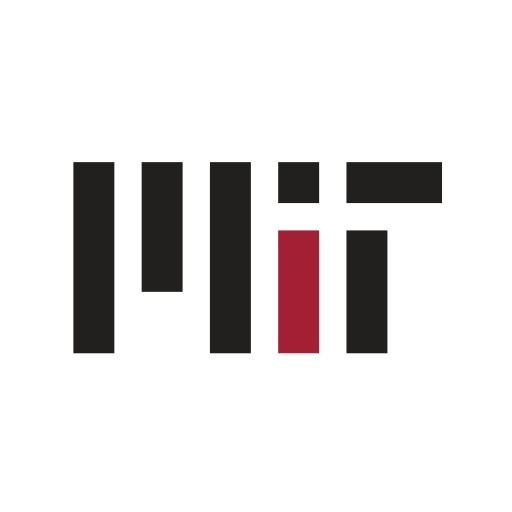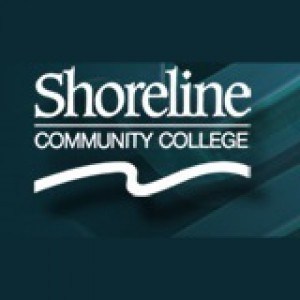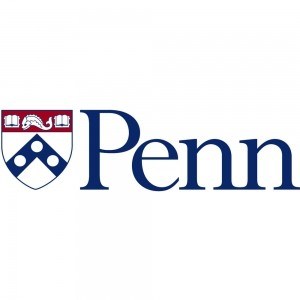Photos of university / #mitpics
Aerospace Engineering at the Massachusetts Institute of Technology offers a comprehensive and rigorous program designed to prepare students for leadership and innovation in the aerospace industry. Through a blend of advanced coursework, hands-on projects, and research opportunities, students gain a deep understanding of the principles of aerodynamics, propulsion, structural mechanics, materials science, and systems engineering. The program emphasizes the development of critical thinking, problem-solving skills, and the ability to work effectively in multidisciplinary teams, reflecting the collaborative nature of aerospace projects. Students have access to state-of-the-art laboratories and facilities, enabling them to engage in experimental research and prototype development. The curriculum is structured to provide a solid foundation in the fundamental sciences and engineering principles while also offering specialized electives in aircraft design, space systems, autonomous vehicles, and air traffic management. The program encourages innovation and entrepreneurship, supporting students in transforming ideas into viable aerospace solutions. Collaboration with industry partners and research centers ensures that students work on real-world challenges faced by the aerospace sector, preparing them for careers in aircraft and spacecraft design, manufacturing, testing, and operations. Graduates of the Aerospace Engineering program at MIT are well-equipped to contribute to advancements in flight technology, space exploration, and aviation safety, making a significant impact on the future of aerospace. With a strong emphasis on research and practical application, the program nurtures the next generation of aerospace engineers capable of shaping the future of transportation and exploration beyond our planet.
AeroAstro Curriculum
The AeroAstro undergraduate curriculum consists of three main blocks:
- Core Curriculum: Introduces students to aerospace engineering fundamentals.
- Professional Area and Concentration Subjects: Courses that treat more extensively, and in greater depth, the material covered in the Core Curriculum. Concentration subjects provide students in-depth study of a field of the student’s choosing.
- Capstone Subjects: Through experimental work and projects, integrates engineering disciplines, and applies much of what has been learned in the Core, Professional Area and Concentration subjects.
Core Curriculum
The AeroAstro Core Curriculum introduces students to the fundamental disciplines of aerospace engineering, providing a basic understanding of:
- materials and structures
- fluids and aerodynamics
- thermodynamics
- physics and dynamics
- electronic signals, systems
- circuits, propulsion, control systems, computer programming, probability and statistics (only for the Course 16 degree)
Much of the Core Curriculum is covered in a course called Unified Engineering, which is offered in sets of two 12-unit subjects in two successive semesters, and taught cooperatively by several faculty members. AeroAstro students take Unified Engineering together, building friendships and connections. Laboratory experiments are performed, and systems problems tying the disciplines together are included.
In addition to Unified Engineering, in the Core Curriculum there are five other courses for Course 16 students and three other courses for Course 16-ENG students. Two courses — Dynamics and Principles of Automatic Control — are typically taken in the first semester of the junior year. (Students in the 16-ENG program — see below — have the option of taking either Dynamics or Principles of Automatic Control.) The other Core Curriculum courses are Differential Equations; Computer Programming; and Statistics and Probability (required for 16, but not 16-ENG, students). These courses are usually taken in the sophomore year.
Professional Area Subjects (Course 16)
Professional area subjects are courses that treat more completely, and in greater depth, the material covered in the Core Curriculum. Aerospace engineering subjects represent traditional aerospace disciplines integral to the design and construction of modern aircraft and spacecraft. Subjects in aerospace information technology are in the broad disciplinary area of information technology, which plays an ever-increasing role in modern aircraft and spacecraft. Students must take four subjects (48 units) from among the Course 16 professional area subjects, with subjects in at least three areas. Students may choose to complete an option in aerospace information technology by taking 36 units from a designated group of subjects specified in the degree chart.
Concentration Subjects (16-ENG)
A significant part of the 16-ENG curriculum consists of electives selected by the student to provide in-depth study of a field of choice. A wide variety of concentrations is possible in which well-selected academic subjects complement a foundation in aerospace engineering and General Institute Requirements. The department has put in place several concentrations in the areas of aerospace software engineering, autonomous systems, communications, computational engineering,computational sustainability, energy, engineering management, environment, space exploration, and transportation. Concentrations are not limited to those listed above. Students can select a pre-defined concentration or may design and propose a technically oriented concentration that reflects their own needs and those of society. All concentrations must be approved by a concentration advisor and by the AeroAstro Undergraduate Office. A student's overall program must contain a total of at least 1.5 years of engineering content (144 units) appropriate to the student's field of study. The required core, lab, and capstone subjects include 102 units of engineering topics. Thus, concentrations must include at least 42 more units of engineering topics. In addition, each concentration must include 12 units of mathematics or science.
Experimental and Capstone Subjects
Culminating the two programs are our aerospace laboratories and capstone subject sequences. These subjects serve to integrate the various disciplines, and emphasize the conceive-design-implement-operate context of the curriculum. Several of them also fulfill the requirement for the Institute Lab and CI-M [communication intensive subjects (2) in the major].
The vehicle and system design subjects (16.82 and 16.83) require student teams to apply their undergraduate knowledge to the design of an aircraft or spacecraft system. One of these two subjects is required and is typically taken in the second term of the junior year or in the senior year. Students are expected to complete at least two professional area or concentration subjects to be allowed in 16.82 or 16.83, both of which also satisfy the Institute CI-M (Communication Intensive Subject in the Major) requirement. The rest of the capstone requirement is met by one of three 18-unit subjects or subject sequences: 16.621 and 16.622 Experimental Projects I and II; or 16.821 Flight Vehicle Development; or 16.831 Space Systems Development. These sequences satisfy the Institute Laboratory as well as CI-M requirements. In 16.821 and 16.831 students build and operate the vehicles or systems developed in 16.82 and 16.83. In 16.621/16.622, students conceive, design, and execute an original experimental research project in collaboration with a partner and a faculty advisor.
Note: students must take at least one CI-M subject in the junior year and a second in the senior year, but since the 16.82/16.821 and 16.83/16.831 sequences meet alternate years, juniors interested in either of these sequences may end up taking both CI-M subjects in their senior year. In these circumstances, affected juniors will petition the Subcommittee on the Communication Requirement with endorsement from the department's Undergraduate Office.
Requirements
- Application fee / fee waiver
- Parent Information
- Essays
- Self-reported Coursework Form
- At MIT, we require letters of recommendation from two teachers (one math/science, one humanities), plus materials from your school counselor (typically including your transcript, a school profile, and a letter of recommendation).
- TOEFL iBT 100
- Interview
The Massachusetts Institute of Technology (MIT) offers a comprehensive suite of financing options to support students enrolled in its Aerospace Engineering program. Financial assistance is designed to ensure that talented students from diverse backgrounds can pursue their education without undue financial burden. MIT's primary source of student funding includes federal and state grants, scholarships, fellowships, and loans. The Institute participates in federal financial aid programs such as the Free Application for Federal Student Aid (FAFSA), providing need-based grants and loans to eligible students. Additionally, MIT offers institutional scholarships and fellowships that are awarded based on merit and financial need, ensuring that students from all economic backgrounds have access to its programs.
Graduate students in Aerospace Engineering have access to Research Assistantships (RAs), Teaching Assistantships (TAs), and Fellowships, which provide stipends and tuition remission. RA and TA positions not only offer financial support but also valuable research and teaching experience, integral to academic and professional development. The Institute also collaborates with government agencies, industry partners, and private foundations to fund specialized fellowships and grants that support research and innovation in aerospace fields.
The financial aid packages at MIT are tailored to individual circumstances, often combining multiple sources of funding to cover tuition, fees, living expenses, and research costs. The Institute commits significant resources to graduate student support, recognizing the importance of fostering an environment of innovation and inquiry. For international students, MIT provides specific scholarships and funding programs, although some aid opportunities are primarily need-based and may require demonstrating financial need. Students are encouraged to apply early for funding and to explore all available resources through MIT’s Office of Financial Aid and the Department of Aerospace Engineering.
Overall, MIT's financing studies encompass a robust array of funding mechanisms designed to support both undergraduate and graduate students in Aerospace Engineering, ensuring that financial barriers do not hinder the pursuit of academic and research excellence.
The Bachelor of Science in Aerospace Engineering at the Massachusetts Institute of Technology (MIT) is a comprehensive undergraduate program designed to prepare students for careers in the design, development, and analysis of aircraft and spacecraft. Throughout the program, students gain a solid foundation in the fundamental principles of engineering, physics, and mathematics, which are essential for understanding the complex systems involved in aerospace technology. The curriculum covers a wide range of topics, including aerodynamics, propulsion, structural analysis, materials science, control systems, and space systems. Students also have the opportunity to engage in hands-on projects, laboratories, and research activities that reinforce theoretical knowledge and develop practical skills.
MIT’s aerospace engineering program emphasizes innovation, critical thinking, and problem-solving, equipping graduates to contribute effectively to the aerospace industry or pursue advanced studies. The program benefits from the institution’s cutting-edge research centers and laboratories, such as the Department of Aeronautics and Astronautics, which provide students access to state-of-the-art facilities and expert faculty. Collaboration and interdisciplinary approaches are encouraged, as students often work on projects related to sustainable aviation, unmanned aerial vehicles, space exploration, and advanced propulsion systems.
Students are encouraged to participate in internships, cooperative education programs, and international exchanges to gain real-world experience and broaden their professional networks. The program typically takes four years to complete and culminates in a Bachelor of Science degree, preparing students for diverse careers in aerospace engineering firms, government agencies, research institutions, or graduate studies. Overall, the Aerospace Engineering program at MIT is designed to foster innovation, technical excellence, and leadership in the aerospace sector, supporting students throughout their academic journey and beyond as they work to advance the frontiers of aerospace science and technology.


